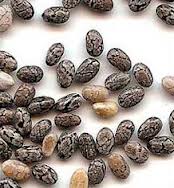WILD HERBS
According to
experts at least half of these herbs contain compounds with dietary and pharmacological properties, so
that, for a long time, men have learned to pick them up and use them as
"medical foods."
But their excessive consumption may have bad effects and be harmful. For example, the
borage, eaten in large quantities, can alter the work of the kidneys because it
causes an excessive accumulation of mineral salts.
It is wise, before eating what is found in meadows and forests,
to read the following information:
Nettle: it can be used in the sheet of lasagna. It is
a source of vitamin C, iron, manganese, potassium and calcium, which are useful
to facilitate the elimination of toxins.
Hops: boiled and seasoned with lemon. Sources of
fiber, the peaks of hops are rich in vitamin B6 and have a tonic effect. They
are perfect in omelets, salads and cooked in soups. Blanch in boiling water and
seasoned with olive oil and lemon, are a tasty side dish.
Dandelion:
in salads, with other flavours. Always been known for its diuretic properties,
due to the presence of minerals, it also contains flavonoids, beta-carotene and
calcium
Borage:
the filling for ravioli. It is a sedative and a tonic for the nervous system
and contains beneficial fatty acids.
Nepitella: in the
panzanella. Also known as mint, grows wild in many parts of Italy. It has
digestive properties, antispasmodic
and antiseptic properties. It is used with
legumes, soups and fillings.
Rapunzel: sauces and soups. Its fleshy roots are rich
in vitamin C, fiber and minerals, it has always been used for digestive,
laxatives and diuretics effects . it has a sweet taste and is used raw in
salads or used in sauces, sauces and fillings. The leaves are bitter, enrich
soups, soups and vegetable pies.





















